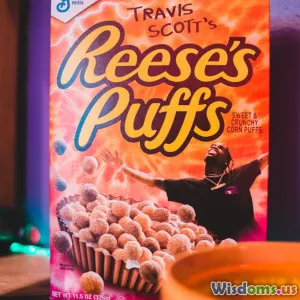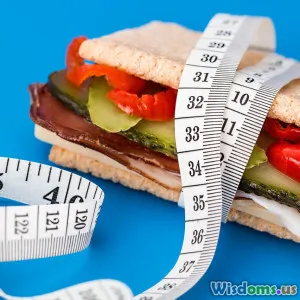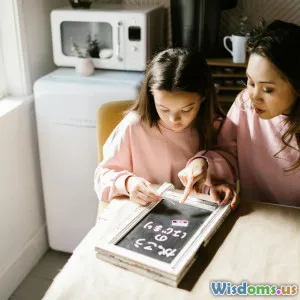
Styling Vintage Finds with Modern Trends Made Easy
12 min read Blend vintage treasures with current trends for standout, personalized style—learn how with actionable tips, real-life examples, and expert insights. (0 Reviews)
Styling Vintage Finds with Modern Trends Made Easy
Introduction: Why Vintage Is Vital in Modern Fashion
What’s old is new again, but does “vintage” just mean retro for retro’s sake? Not anymore. In recent years, vintage fashion has burst beyond the niche, stepping onto mainstream runways and city streets worldwide. Some of the most innovative contemporary looks are born from the surprising marriage of antique treasures with today’s hottest trends. Fashion enthusiasts are no longer content with cookie-cutter styles—personalization, storytelling, and a low-impact wardrobe reign supreme.
But navigating the vast world of secondhand shops, grandma’s chest, and thrift scores can feel overwhelming—especially when you want your outfit to look relevant rather than like a historical re-enactment. How do you make a Victorian brooch or ‘70s bell-bottoms sing in 2020s streetstyle? This article unpacks the how-to of styling vintage garments and accessories with modern trends, ensuring creativity, practicality, and endless fun. We provide real-world examples, expert quotes, and actionable ideas to help you curate a fresh, confident look, no matter your style.
The Vintage-Modern Fusion: More Than a Fashion Statement
Why Vintage?
Going vintage isn’t just about nostalgia. The global secondhand apparel market surpassed $177 billion in 2022, with projections to hit $350 billion by 2027 (ThredUp 2023 Resale Report). Sustainability and individuality are driving forces: Wearing vintage reduces environmental impact and ensures a look that stands out.
“People want to tell a story with what they wear. Vintage finds have stories built in, ready to be woven into the present.” —Jessica Harms, Sustainable Fashion Advocate
The Modern-Twist Mindset
Most runway designers—from Gucci to Marc Jacobs—have merged archival silhouettes and motifs with forward-looking aesthetics. For instance, Gucci’s Alessandro Michele regularly references 1970s silhouettes, but frames them in bold, modern colors and eccentric layering. By mixing eras, you keep things unexpected and visually dynamic.
The formula for success? Boldness, creativity, and selective editing. It’s less about dressing up as another time; more about honoring the past while owning the present.
Section 1: Where to Begin—Finding Your Vintage Muse
Discover Your Decade
Start with inspiration. Are you drawn to Audrey Hepburn’s understated 1960s chic, the grunge flavor of early 1990s, or Studio 54’s disco glamour?
Tip: Create a mood board with clippings, Pinterest pins, or Instagram saves from multiple eras. This builds your visual vocabulary and helps pinpoint specific elements (lace collars, flared cuffs, patinaed jewelry, bold lapels) you love the most.
Sourcing Vintage Gold
- Thrift and Consignment Stores: The classic hunt—good for basics and hidden gems.
- Estate Sales and Markets: Great for one-off, quality treasures.
- Online Marketplaces: Etsy, Depop, ThredUp, and The RealReal offer curated selections and the ability to filter by year, brand, or style.
Real Example: Nina Parker, an LA-based stylist, shares, “My go-to is layering a 1980s power blazer over a crisp, cropped tee—both found secondhand. It looks intentional, not ‘costumey,’ and has sparked more compliments than my designer pieces.”
Section 2: Pairing & Balancing—Core Principles of Mixing Eras
1. Start with a Statement Piece
Make your vintage find the outfit’s centerpiece. Try a boldly patterned 1970s blouse, a rhinestone belt, or retro loafers—then build your look around it with up-to-date basics (think straight-leg jeans, modern sneakers, or streamlined knits).
Outfit Example:
- Vintage paisley shirt + black skinny jeans + platform sneakers = youthful, balanced edge.
2. Use Modern Silhouettes for Structure
Not all vintage pieces fit the way we like today. Shirtdresses, ‘80s jackets or oversized tops can feel overwhelming. Tame them by:
- Adding a contemporary belt to cinch the waist
- Pairing with slim, tailored bottoms
- Rolling up sleeves to modernize proportions
“Proportions are key,” notes New York stylist Emma Keele. “A vintage puff-sleeve blouse looks current when worn untucked over wide-leg trousers, finished with a minimalist handbag.”
3. Play with Color and Texture
Vintage often brings strong colors or worn-in textures. Pair these with neutral, monochromatic separates for a clean, 2020s vibe. Or, take a style risk by clashing prints intelligently—a floral ‘60s skirt with a modern geometric knit in double-knit fabric, for example.
Case Study: Lisa Lo, a street-style influencer, rocked a 1950s tulle skirt with a basic white tank top and chunky, bright Nikes at Paris Fashion Week 2023. The blend created an editorial-worthy look that trended across Instagram and TikTok.
4. Don’t Forget Accessories
Vintage accessories often have more character than their modern counterparts. Add punch or polish with art deco earrings, tortoiseshell sunnies, silk scarves, or antique pins tinkered onto modern hats or bags.
Expert Quote:
“Even if you don’t wear full-on vintage clothes, incorporating old jewelry or bags is the low-commitment path to a richer style story.” —Daniel Yu, Accessories Curator
Section 3: Nos, Yeses, and Style Hacks
Avoiding Costume Territory
The line between “vintage-inspired” and “I’m going to a flapper party” is thin. So how do you keep it contemporary?
Key Dos:
- Mix only one or two vintage elements per outfit
- Ground ornate pieces with modern basics (white T-shirts, plain trousers, simple booties)
- Avoid head-to-toe era dressing
Key Don’ts:
- Don’t over-layer; most vintage items are already distinctive
- Don’t neglect tailoring: update a vintage jacket with a new lining, or take up a hem for a fresher fit
Style Hack: If you snag a fabulous 1970s silk scarf, try using it as a belt, head tie, or bag accent—a micro-trend born on TikTok that’s as practical as it is chic.
Section 4: Modern Trends That Pair Well with Vintage
1. Sustainable Streetwear
Pair a slouchy 1990s bomber with cargo pants or a contemporary hoodie.
2. Minimalism Meets Mix-and-Match
Try Scandinavian finishes—clean lines, black/white palettes—with ornate Edwardian or Art Nouveau details like brooches or lace camisoles.
3. Athleisure and Vintage Glam
Slip a sequin 1980s jacket over modern leggings and a crop top. Combinations like this have been featured by model Paloma Elsesser and designer Harris Reed.
4. Gender-Fluid Silhouettes
What’s more modern than breaking boundaries? Oversized vintage blazers, unstructured trousers, and men’s ties or Oxfords—styled by all, regardless of gender identity.
5. Denim Remixed
High-rise, straight-leg jeans from the 1980s meld seamlessly with modern crop tops or micro handbags. Levi’s “Authorized Vintage” program demonstrates high consumer demand (over $5M in resale revenue in Q1 2023).
Section 5: Real-World Inspirations
Celebrities & Street-Style Heroes
- Zendaya: Regularly sports archive Valentino, old-school Nike sneakers, or vintage headscarves with contemporary suiting, earning praise from Vogue.
- Harry Styles: Mixes British heritage tweeds with pearl necklaces and digital-printed knits for an idiosyncratic, wildly popular look.
- Iris Apfel: At age 102, remains the unofficial queen of maximalist vintage-modern layering, proving that age and creativity are natural allies.
Social Media and the Democratization of Style
Instagram hashtags like #vintagefashion and #modernvintage have millions of posts, providing limitless inspiration and the confidence to experiment. TikTok creators (see @brittanymason_stylist) guide followers in mixing Grandma’s dresses with Off-White trainers, blending eras with irreverent fun.
Section 6: Caring for Your Vintage Collection
Once acquired, vintage pieces need extra TLC.
- Laundering: Use gentle detergents; avoid high heat with synthetics. For delicate items (beaded gowns, old knits), seek professional cleaning.
- Repairs: Invest in minor tailoring. Swap retro buttons for contemporary ones if your garment needs a lift.
- Storage: Hang with padded hangers; use cedar blocks; avoid direct sunlight or plastic storage, which can trap moisture.
Pro Tip: Rotate special items into daily wear to avoid “special occasion only” syndrome. These pieces are made to be seen and enjoyed!
Section 7: Building Confidence to Mix It Up
Even if you’re new to styling, confidence is half the battle. Don’t be afraid of making mistakes—experimentation leads to discovery.
", Advice from Pros: “Own your look. When you wear something with confidence—even a quirky old vest or bold brooch—others will take their cue from you.” —Andrea Chu, Fashion Educator
Begin with small steps: blend a single vintage accessory into your everyday look. Once comfortable, progress to bolder combinations!
Conclusion: Your Style, Your Story
Integrating vintage finds with modern trends isn’t a formula to follow slavishly; it’s a creative playground. With every thoughtfully combined era, you express more than just personal taste—you become part of fashion’s ongoing dialogue and push boundaries for a more sustainable, story-driven wardrobe.
So raid that thrift store, browse the attic, or scroll the online vintage marketplace with confidence. Armed with these strategies and inspiration, you’ll not only look fantastic—you’ll feel great about writing your own style narrative, one conversation-starting outfit at a time.
Quick Recap Checklist: How To Start
- Identify your favorite eras with inspiration boards
- Hunt for unique, versatile vintage pieces
- Style vintage with modern silhouettes and basics
- Don’t neglect smart accessorizing
- Maintain and care for your treasures
- Wear your combinations with confidence!
Styling vintage finds with modern trends isn’t about rules—it’s about resourcefulness, fun, and truly owning your look. Happy mixing!
Rate the Post
User Reviews
Popular Posts



















